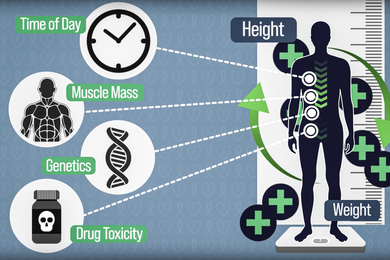Starting this week, a new search engine for MIT-related web pages will make searches more efficient and thorough. The top-level search page is at http://web.mit.edu/search.html.
Information Systems has replaced the Harvest search engine with Ultraseek -- a customized version of Infoseek's search engine for which MIT has purchased a site license. The company was chosen after an IS discovery team assisted by an MIT librarian analyzed and tested various alternatives.
Many commercial Internet-wide search sites don't fully index university web sites, but Ultraseek will continually index all MIT-based web pages and servers, not just pages with "web.mit.edu" in the address, said Suzana Lisanti, MIT's campus-wide information systems (CWIS) facilitator. There are now more than 1,000 servers with about 1.2 million web pages maintained by MIT departments, labs, centers, programs and individuals, she said. However, none of the pages on the MIT-only "tute.mit.edu" server have been indexed by Ultraseek.
The top-level search page is a combined entry point to several MIT search tools. Ultraseek searches any text on web pages; the online directory lists people or offices at MIT; and there is a specialized search for personal home pages indexed by the Student Information Processing Board (SIPB).
SPECIFIC SEARCHES
By clicking on Advanced Search, users are taken to a page that allows them to do a search through all MIT pages, just those on the web.mit.edu server or through the entire Internet; search for terms in any part of a web page such as the body, title, URL or link; exclude specific terms; search for pages loaded within a specific time frame; and sort the list of hits by one of several criteria.
The CWIS team will offer free training sessions to MIT web publishers on how to customize Ultraseek to search just their sites. "It's very easy for web publishers to set up those forms," Ms. Lisanti said.
Information on web page design, frequently asked questions, upcoming training and presentations, and other web publishing topics can be found from the CWIS page. There are also help pages for Ultraseek available.
Because Ultraseek is indexing most of MIT's pages, publishers need to be aware of security issues. For example, pages containing user IDs could appear in a search if they are not carefully designated as restricted-access sites, noted Jag Patel, a CWIS consultant who has worked on installing Ultraseek.
MAXIMIZING HITS
Conversely, web publishers can increase a page's relevancy ranking -- in other words, make it more likely to come up as a prominent "hit" in searches -- by putting "meta tags" at the top of each page. CWIS provides web-based information onhow to do this. The September/October issue of the i/s newsletter also features an article on meta tags.
To make sure Ultraseek would be sufficiently robust, discovery team users successfully performed elaborate searches during the testing phase. "I couldn't make Ultraseek break," said team member Nina Davis-Millis, an information technology librarian. Ultraseek is designed to return results within one second, Ms. Patel said.
A version of this article appeared in MIT Tech Talk on November 4, 1998.





